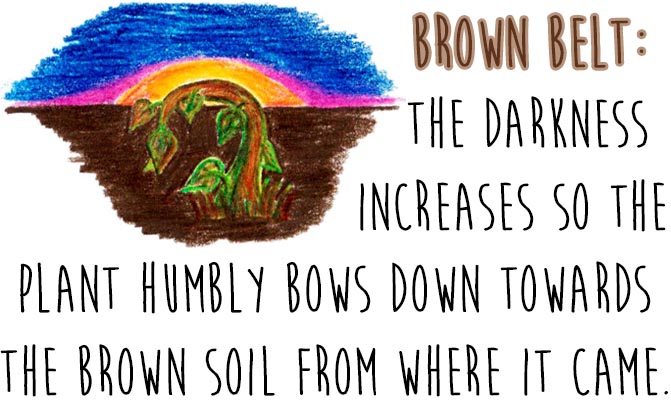Did you know?
The various belt colors in Karate symbolize the stages of a growing plant.
It’s a circle of life.
The longer you practice Karate, the more you’ll see yourself changing and growing just as a plant does.
The belt colors tell a story…
Of life, growth & advancement.
From the beginning and birth (white belt) to the intermediate parts of development (orange, green, blue etc.) to maturing and going beyond (purple, brown, black belt).
The belts symbolize your progress as an individual – both inside & outside the dojo.
You’ll understand when you see my illustrations below.
Check it out:








And so…
The circle of life continues.
But remember; it’s not just about becoming more skilled.
It’s also about improving your core character, to become a better person as a whole.
Going up a rank gives you the opportunity to do and be better – to reach for more.
Expand on your knowledge and skills as you grow, and always try to embody the true meaning of each of the belt colors along the way.
It’s not really about the belt.
It’s about what it stands for.



56 Comments